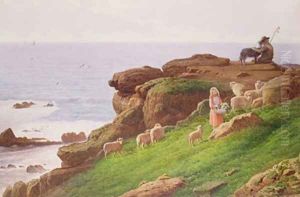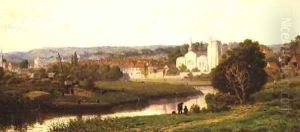J. Hardwicke Lewis Paintings
J. Hardwicke Lewis, born in 1876, was a British artist known for his contributions to the early 20th-century art scene, particularly within the realms of painting and illustration. His work, though not as widely recognized as some of his contemporaries, played a significant role in the development of British art during a period of great change and innovation. Lewis’s artistic journey began at a young age, influenced by the vibrant cultural milieu of late 19th-century Britain, a time when the arts were undergoing a profound transformation in response to the social, technological, and philosophical shifts of the era.
Lewis studied art at the Royal Academy of Arts in London, where he honed his skills and developed a distinctive style that blended traditional techniques with emerging modernist sensibilities. Throughout his career, Lewis exhibited a keen interest in the natural world, often incorporating elements of the British countryside into his works. His landscapes and scenes of rural life are characterized by a delicate handling of light and color, capturing the transient beauty of the natural world with a subtle, yet profound, sensitivity.
In addition to his landscapes, J. Hardwicke Lewis also made significant contributions to the field of illustration. His illustrations appeared in a variety of publications, including books and magazines, where his ability to convey complex narratives through visual imagery won him acclaim. Lewis’s illustrations often featured themes of mythology, history, and folklore, imbued with a sense of romanticism and nostalgia that resonated with readers and viewers alike.
Despite his talents and the quality of his work, Lewis remained relatively modest in terms of fame throughout his life and beyond. His death in 1939 marked the end of a career that, while not as celebrated as some of his peers, contributed to the richness and diversity of early 20th-century British art. Today, J. Hardwicke Lewis's work is appreciated by art historians and collectors who recognize his unique contribution to the arts, offering a glimpse into the transitional period of British art from the Victorian era towards modernism.

